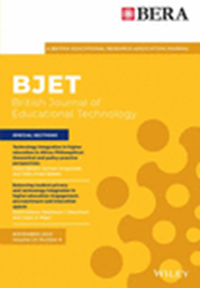The dark side of affinity spaces for teacher professional learning
Abstract
The affinity space framework has proven useful for explaining and understanding teacher activity on social media platforms. In this study, we explore the ‘dark side’ of teacher affinity spaces by documenting a partisan teachers' group on an alternative social media platform. We used a mix of a priori and emergent coding to analyse screenshots of posts and comments from a public teachers' group and group administrators' activity on the broader platform. Findings indicate that although the group administrators began with a focus on teachers, most participants were non-teachers with political (rather than professional) concerns about US education. Furthermore, administrators both freely engaged with political talking points in their activity outside the teachers' group and allowed the broader platform culture—including conspiratorial thinking, explicit racism and out-group villainization—to seep in. We conclude by describing how these findings correspond with the key characteristics of an affinity space, including an overlapping of affinities, a lack of concern for professional qualifications, and influence from the broader platform. These findings provide an illustrative example of how teacher affinity spaces can drift from their stated intention within the larger platform context.
Practitioner notes
What is already known about this topic
- Social media spaces have been conceptualized as affinity spaces for educators.
- Most studies provide optimistic accounts of teacher professional learning on social media.
- Most research has analysed teachers' use of mainstream platforms.
What this paper adds
- We offer a detailed analysis of a partisan US teacher group on an alternative platform.
- Initial efforts to focus on teaching devolved into in-group identification and out-group villainization.
- This study highlights how the characteristics of affinity spaces can be detrimental to teacher professional learning.
Implications for practice and/or policy
- Administrators of online groups should recognize their important role in ensuring group purposes are enacted.
- Educators should assess whether the larger platform is conducive to cultivating affinity around the group's aims.
- Scholars and educators should consider that the characteristics of affinity spaces can be either positive or negative for teacher professional learning.


 求助内容:
求助内容: 应助结果提醒方式:
应助结果提醒方式:


